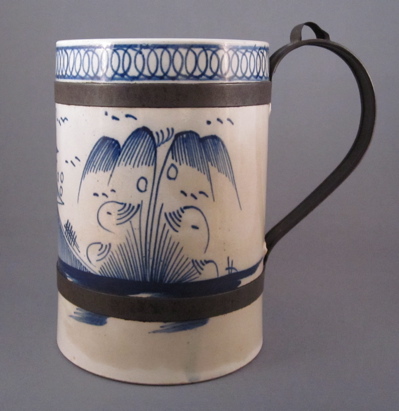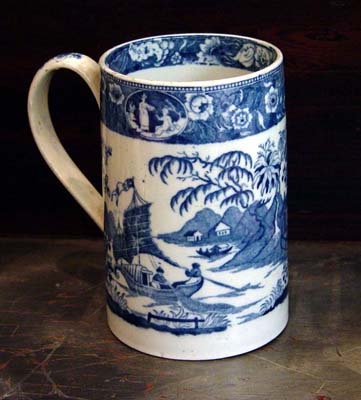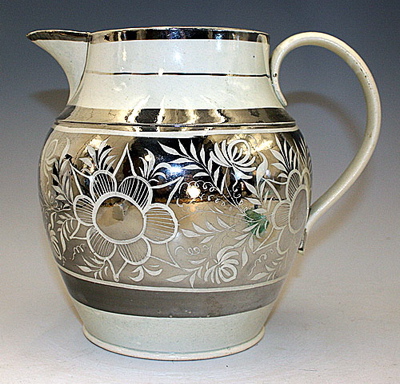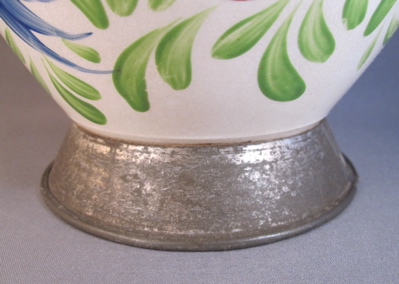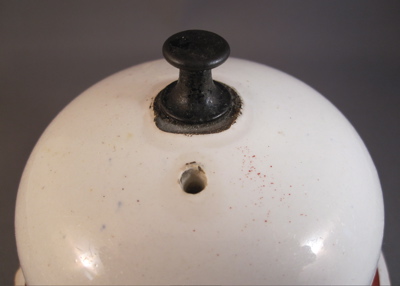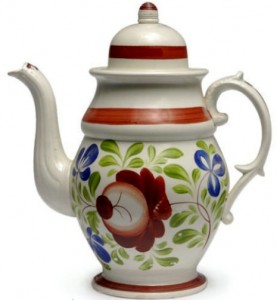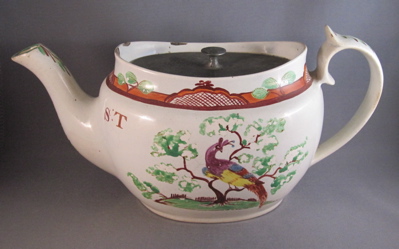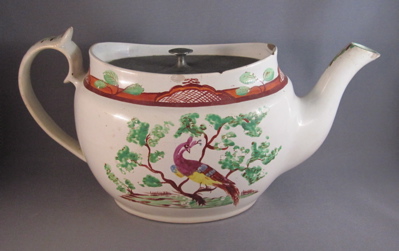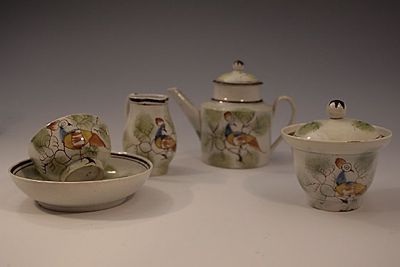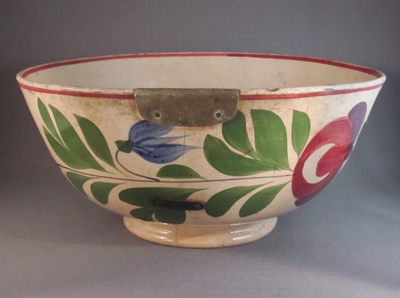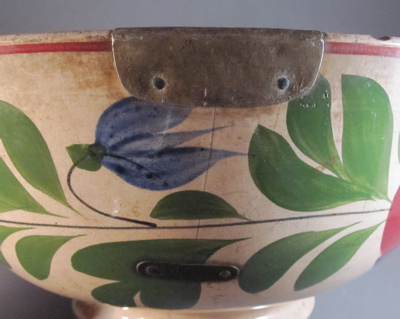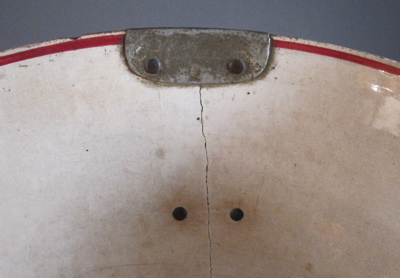A child’s waste bowl with brown printed transfer decoration on soft paste pearlware pottery, made in England in the early 1800’s. This small waste bowl was part of a child’s tea set which would have included a teapot, cream jug, sugar jar, plates, cups & saucers. The waste bowl (aka slop bowl) was used for emptying unwanted cold tea before refilling a cup with hot tea
One side of the bowl has a printed design depicting a girl and boy chasing a butterfly…
…the other side shows the same girl and boy after the successful capture of the butterfly
After the bowl was dropped and broke in to four pieces, it was taken to a tinsmith who created an elaborate metal truss to keep it intact. A puddle of light blue glaze seen on the inner rim confirms this to be a piece of pearlware pottery. Bowl measures 2-1/2″ high and has a diameter of 5″














